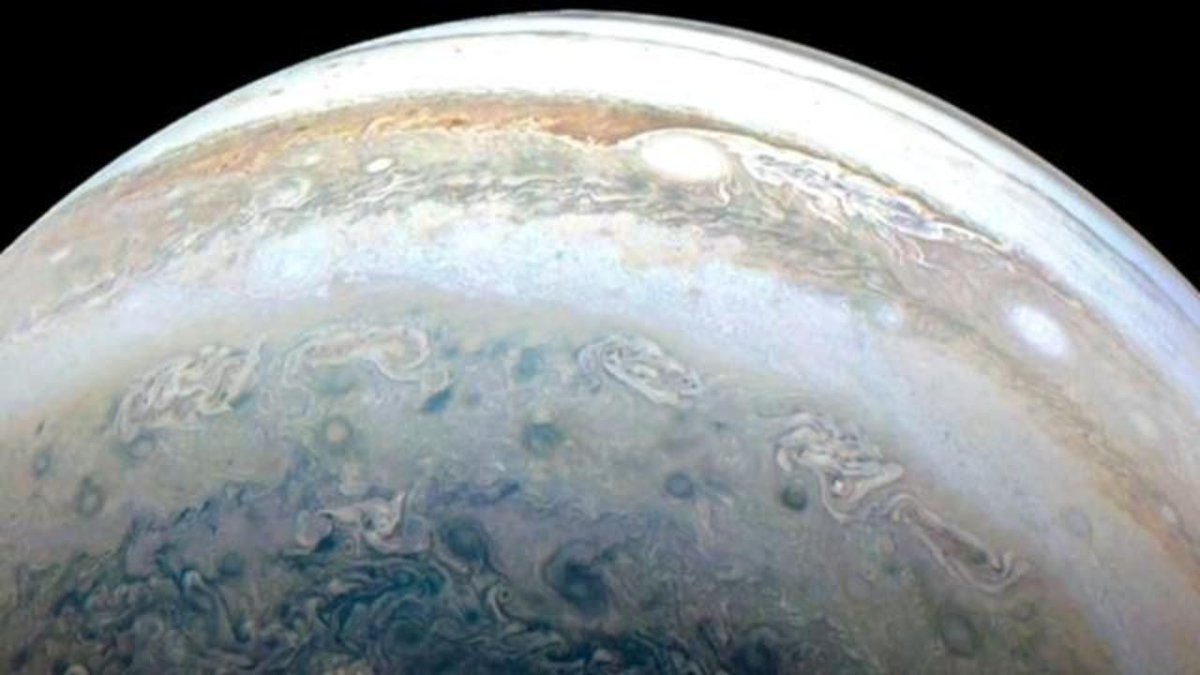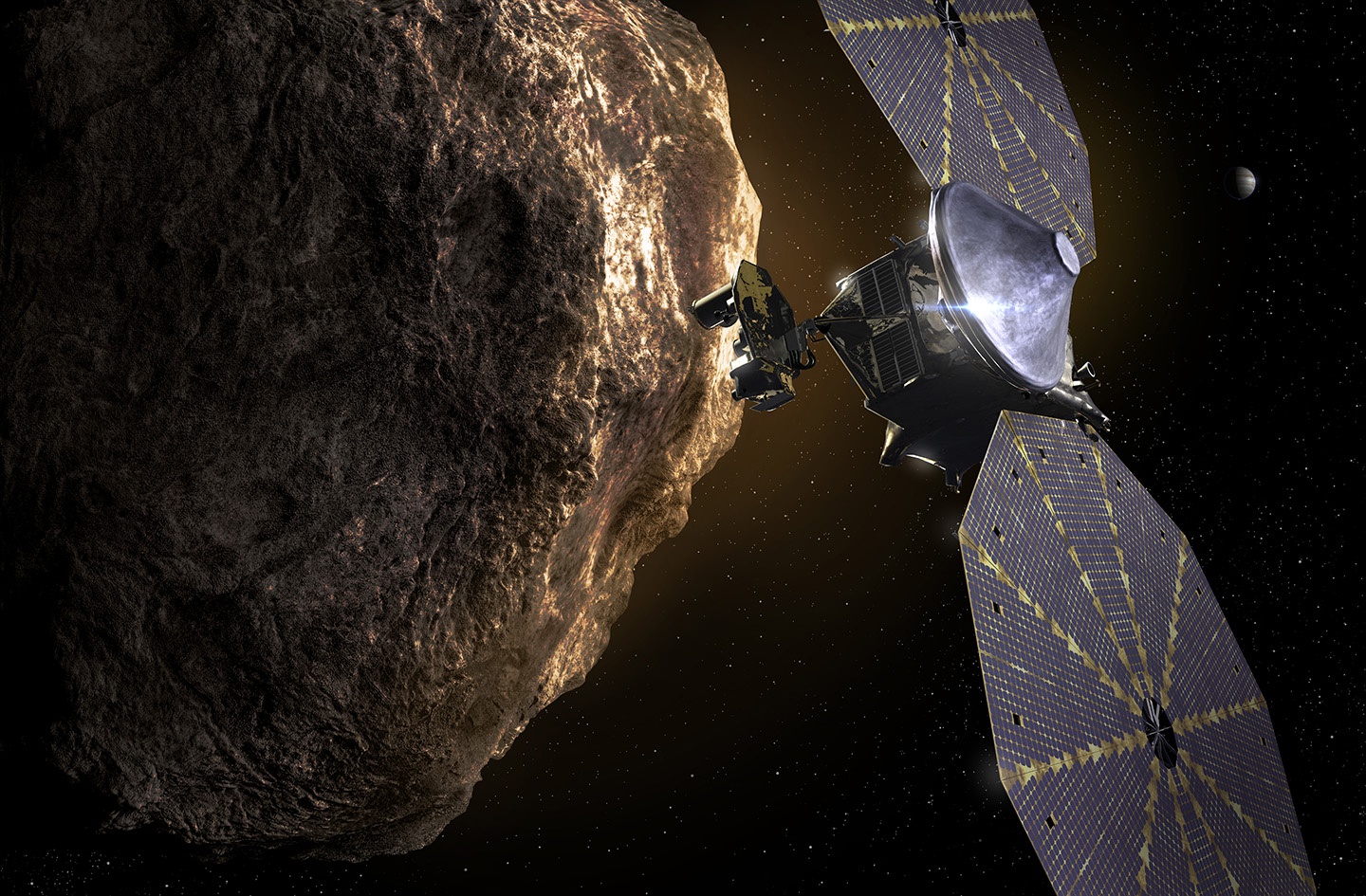Timing is extraordinarily important in many aspects of astronomy. If an astronomer or their instrument is looking the wrong way at the wrong time they could miss something spectacular. Alternatively, there are moments when our instruments capture something unexpected in regions of space that we were searching for something else. That is exactly what happened recently when a team of scientists, led by Rohini Giles at the Southwest Research Institute, saw an image of what is likely a meteor impacting Jupiter’s atmosphere.
Continue reading “Juno Just Saw a Spacerock Crash Into Jupiter”Jupiter’s Trojan Asteroids Offer Surprises Even Before NASA’s Lucy Mission has a Chance to Visit Them.
A new study out this month suggests that Jupiter’s Trojan asteroids may be more peculiar than previously thought. The Trojan asteroids are rocky objects which orbit the Sun just ahead of and just behind the gas giant, in gravitational sweet spots known as Lagrange points. The swarm ahead of Jupiter, known as the L4 (Greek) group, is slightly larger than the L5 (Trojan) swarm behind, but until now, astronomers believed that there was otherwise little differentiation between the two swarms. The paper released this month appears to change that.
Continue reading “Jupiter’s Trojan Asteroids Offer Surprises Even Before NASA’s Lucy Mission has a Chance to Visit Them.”Galileo’s Probe Discovered a Mystery at Jupiter, Juno Finally Helped Solve it
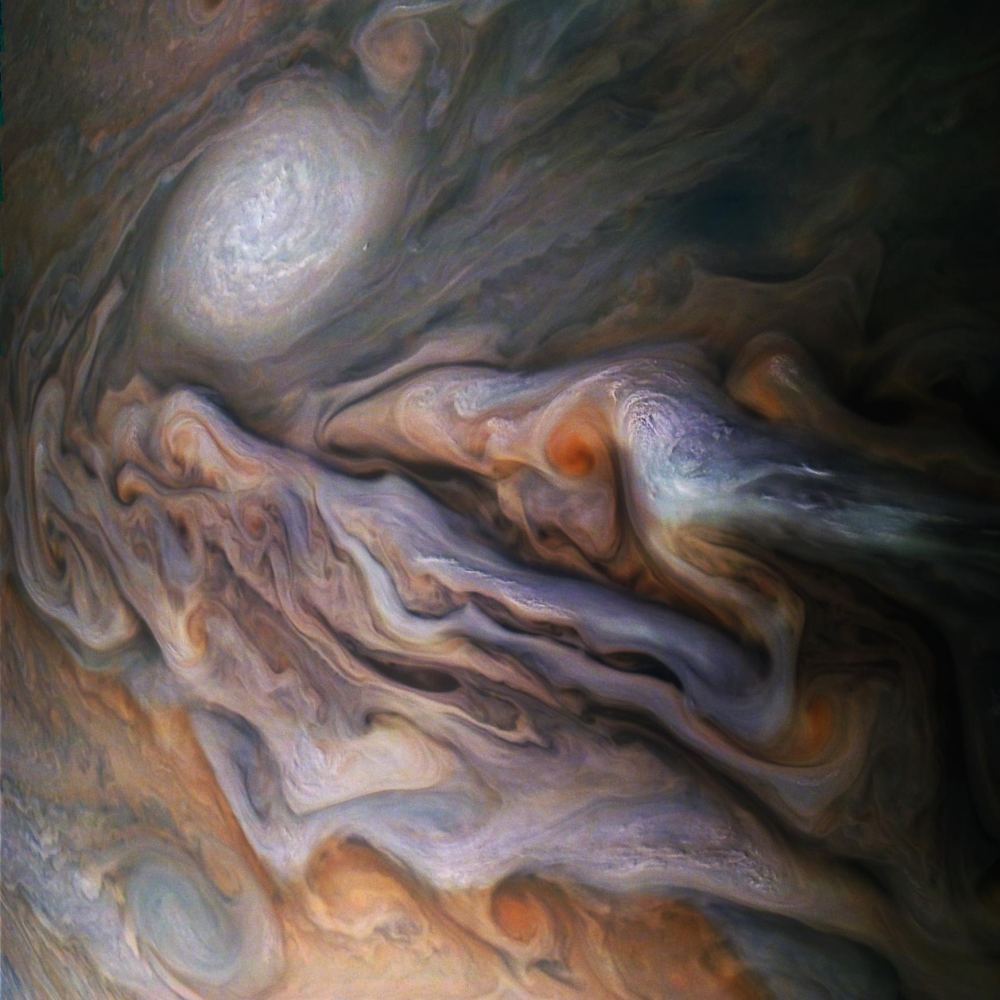
In 1995, NASA’s Galileo mission dropped a probe into the atmosphere of Jupiter and found it to be far drier than expected. In 2020, NASA’s follow-up mission Juno explained the mystery: it involves mushballs.
Continue reading “Galileo’s Probe Discovered a Mystery at Jupiter, Juno Finally Helped Solve it”The Newest Picture of Jupiter and Europa Captured by Hubble
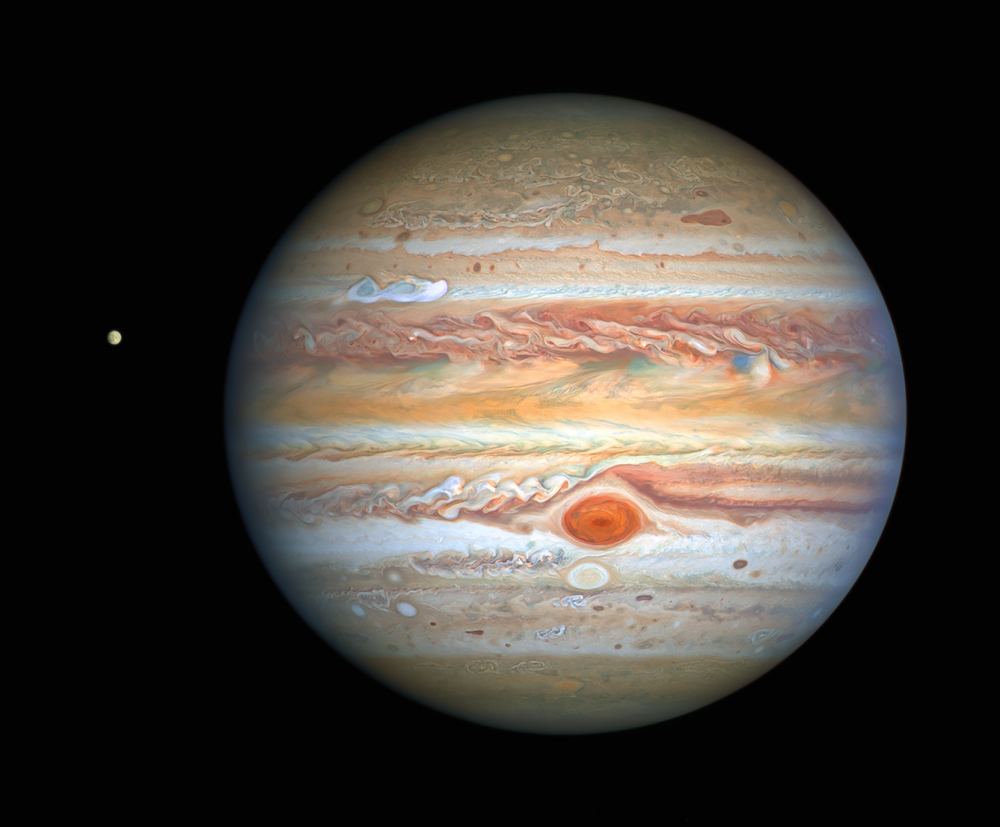
The venerable Hubble Space Telescope has given us another gorgeous picture of Jupiter and its moon Europa. The incredibly sharp image was captured on August 25th, and shows some of the stunning detail in Jupiter’s stormy atmosphere. Hidden in all that stormy activity is something new: a bright white storm plume travelling at about 560 km/h (350 mp/h).
Continue reading “The Newest Picture of Jupiter and Europa Captured by Hubble”See a 360 Degree Juno-Eye View of Jupiter During an Io Eclipse
Yesterday, we posted some incredible photos from the Juno Probe’s 29th flyby of Jupiter. Juno is in a highly elliptical orbit. It buzzes the planet at an altitude of 4,200km and then sweeps out to 8.1 million. Completing this circuit every 53 days, Juno only spends 2 hours within close proximity to Jupiter reducing the probe’s exposure to harmful radiation of high energy particles accelerated by Jupiter’s magnetic field.
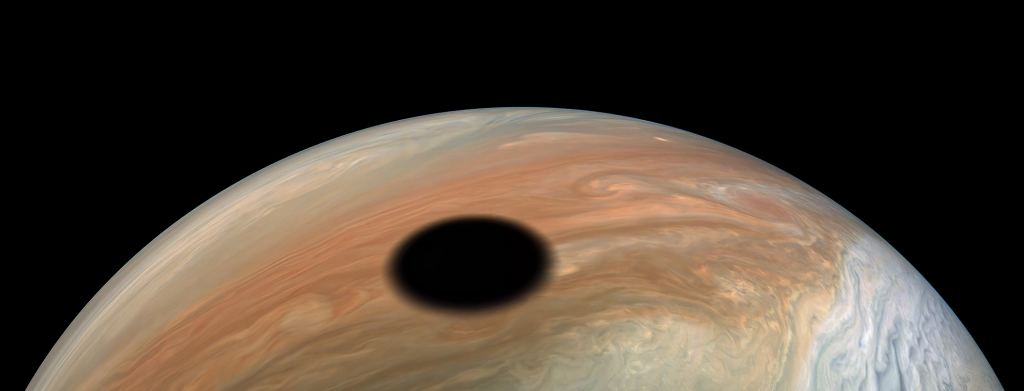
Here’s Jupiter from Juno’s Latest Flyby
Jupiter.
Most massive planet in the solar system – twice that of all the other planets combined. This giant world formed from the same cloud of dust and gas that became our Sun and the rest of the planets. But Jupiter was the first-born of our planetary family. As the first planet, Jupiter’s massive gravitational field likely shaped the rest of the entire solar system. Jupiter could’ve played a role in where all the planets aligned in their orbits around the Sun…or didn’t as the asteroid belt is a vast region which could’ve been occupied by another planet were it not for Jupiter’s gravity. Gas giants like Jupiter can also hurl entire planets out of their solar systems, or themselves spiral into their stars. Saturn’s formation several million years later probably spared Jupiter this fate. Jupiter may also act as a “comet catcher.” Comets and asteroids which could otherwise fall toward the inner solar system and strike the rocky worlds like Earth are captured by Jupiter’s gravitational field instead and ultimately plunge into Jupiter’s clouds. But at other times in Earth’s history, Jupiter may have had the opposite effect, hurling asteroids in our direction – typically a bad thing but may have also resulted in water-rich rocks coming to Earth that led to the blue planet we know of today.
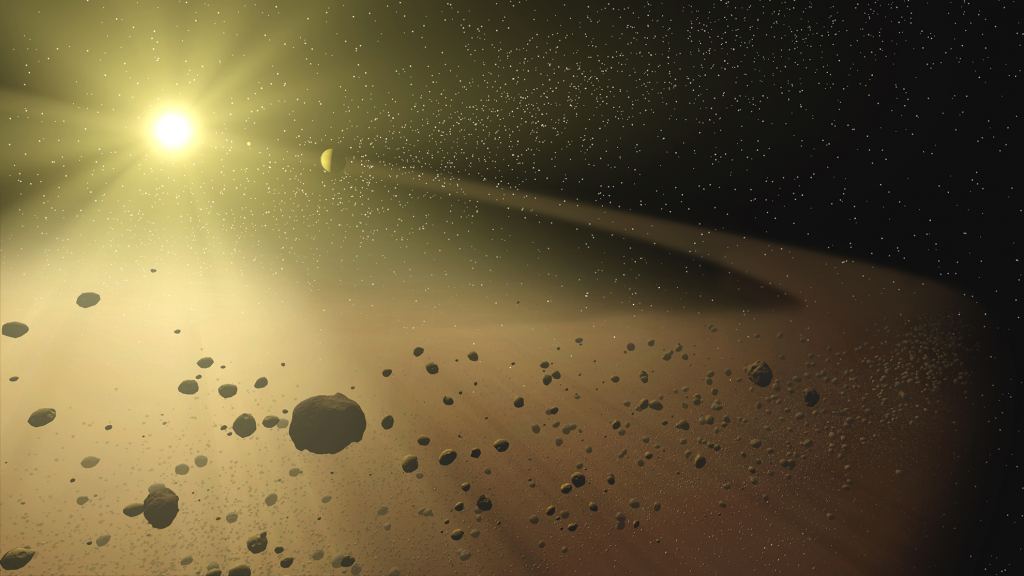
Jupiter Probably Has 600 Small, Irregular Moons
The better our technologies get, the better we get at finding objects in space. That’s certainly true of Jupiter and its moons. Prior to Galileo, nobody knew the other planets had moons. Then in 1609/10, as he made improvements to his telescope, he aimed it at the gas giant and eventually found four moons: Io, Europa, Ganymede, and Callisto. Now those four natural satellites also bear his name: the Galilean moons.
Over the centuries since then, and especially in our digital age, astronomical tools and methods kept improving. In particular, wide-field CCD (Charge Coupled Devices) have led to an explosion of astronomical discoveries. In recent years, the confirmed number of Jovian moons has risen to 79. Now, a new study says that there may be 600 small irregular moons orbiting Jupiter.
Continue reading “Jupiter Probably Has 600 Small, Irregular Moons”Europa’s entire icy shell shifted 70-degrees a few million years ago
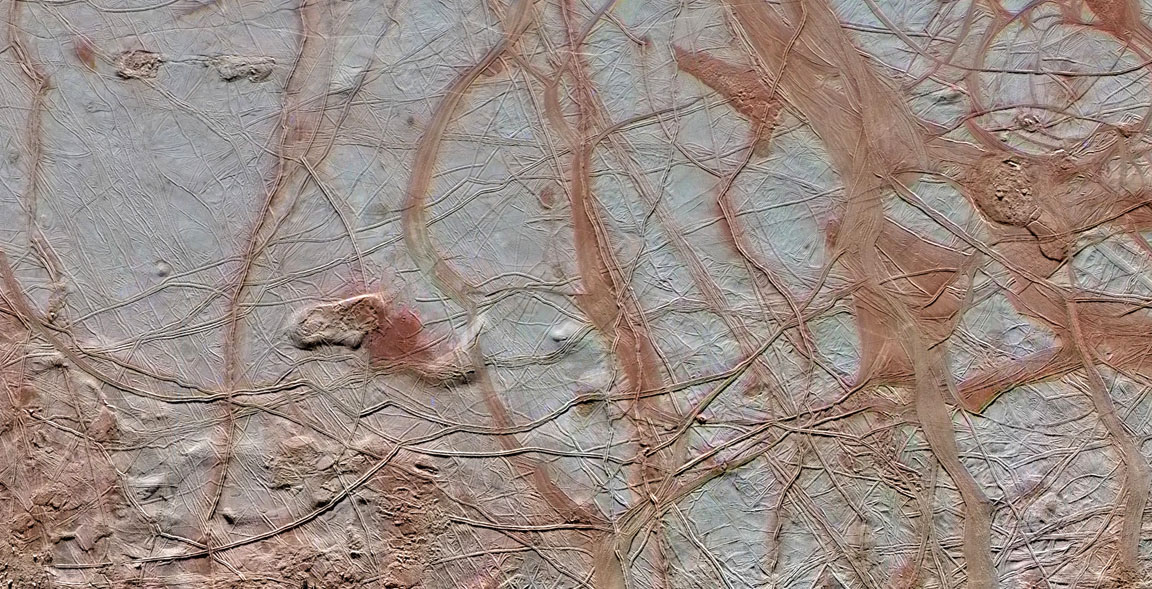
The mysterious world Europa, the ice-covered second moon of Jupiter, sports deep scars that cut across its face. An international team of investigators studied high-resolution maps of that surface to reveal a pattern: something shook Europa sometime within the past few million years, causing the entire shell to shift by 70 degrees.
Continue reading “Europa’s entire icy shell shifted 70-degrees a few million years ago”A Huge Ring-Like Structure on Ganymede Might be the Result of an Enormous Impact

Ganymede’s surface is a bit of a puzzle for planetary scientists. About two-thirds of its surface is covered in lighter terrain, while the remainder is darker. Both types of terrain are ancient, with the lighter portion being slightly younger. The two types of terrain are spread around the moon, and the darker terrain contains concurrent furrows.
For the most part, scientists think that the furrows were caused by tectonic activity, possibly related to tidal heating as the moon went through unstable orbital resonances in the past.
But a new study says that a massive impact might be responsible for all those furrows.
Continue reading “A Huge Ring-Like Structure on Ganymede Might be the Result of an Enormous Impact”Jupiter is so Big that our Solar System almost had two Suns
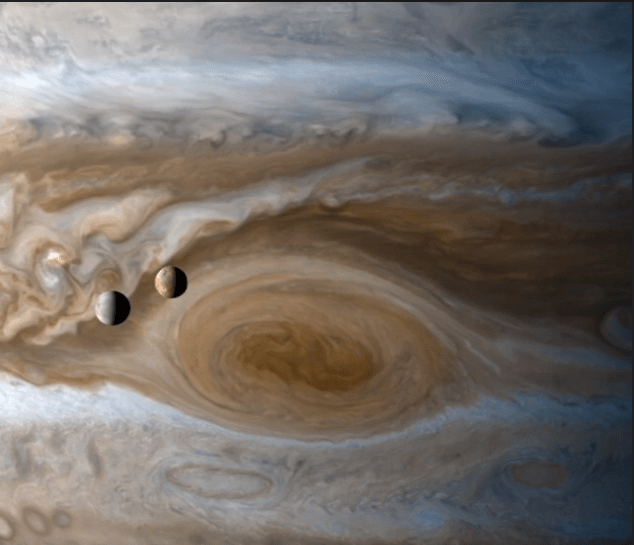
About half of all the star systems in the galaxy are made of pairs or triplets of stars. Our solar system features just one star, the Sun, and a host of (relatively) small planets. But it was almost not the case, and Jupiter got right on the edge of becoming the Sun’s smaller sibling.
Jupiter, the biggest planet in the solar system, is by far the largest. If you added up the masses of all the other planets, it wouldn’t even come to half of the mass of Jupiter. You could eliminate every single planet in the solar system except Jupiter, and you would basically still have…the solar system.
Continue reading “Jupiter is so Big that our Solar System almost had two Suns”
